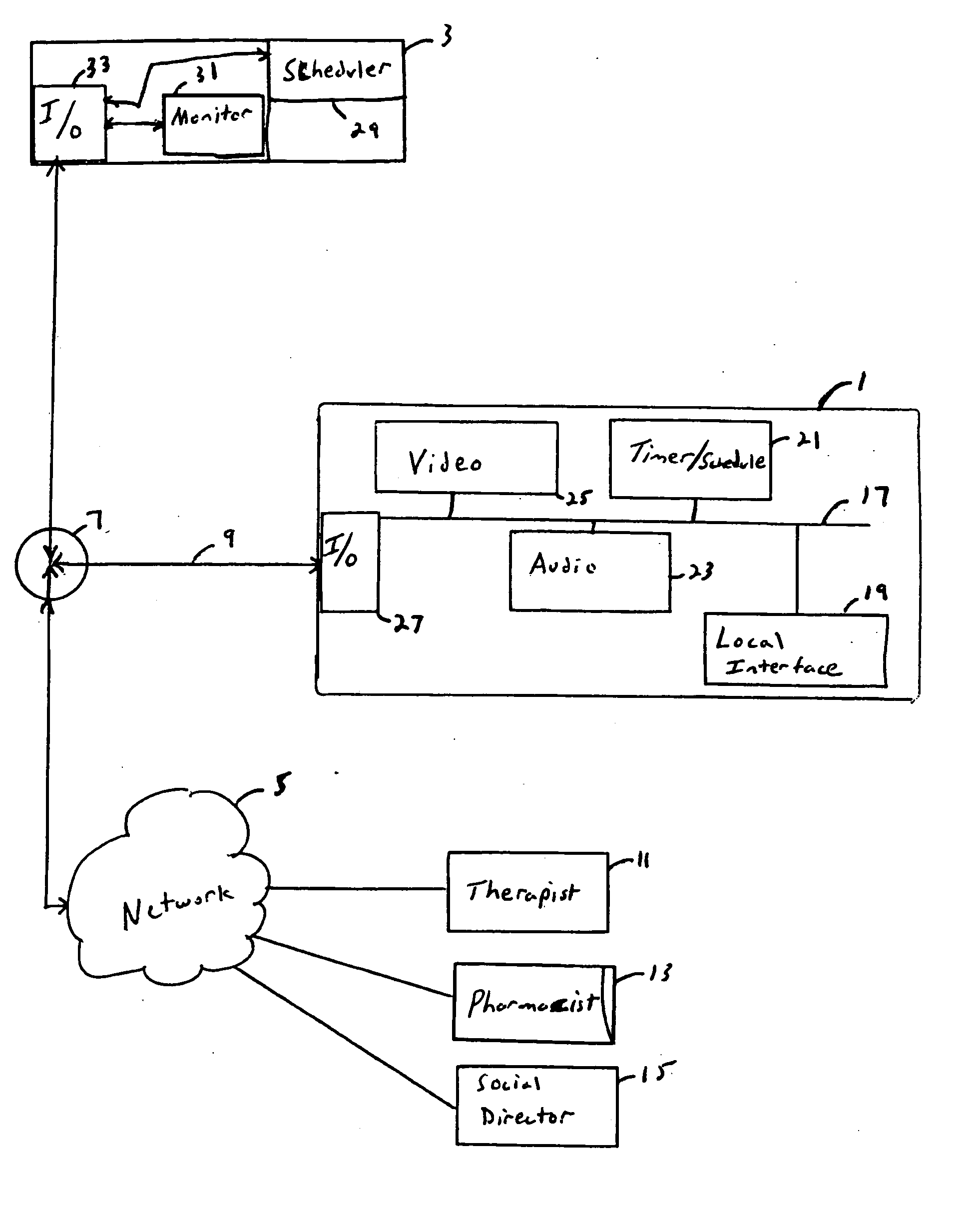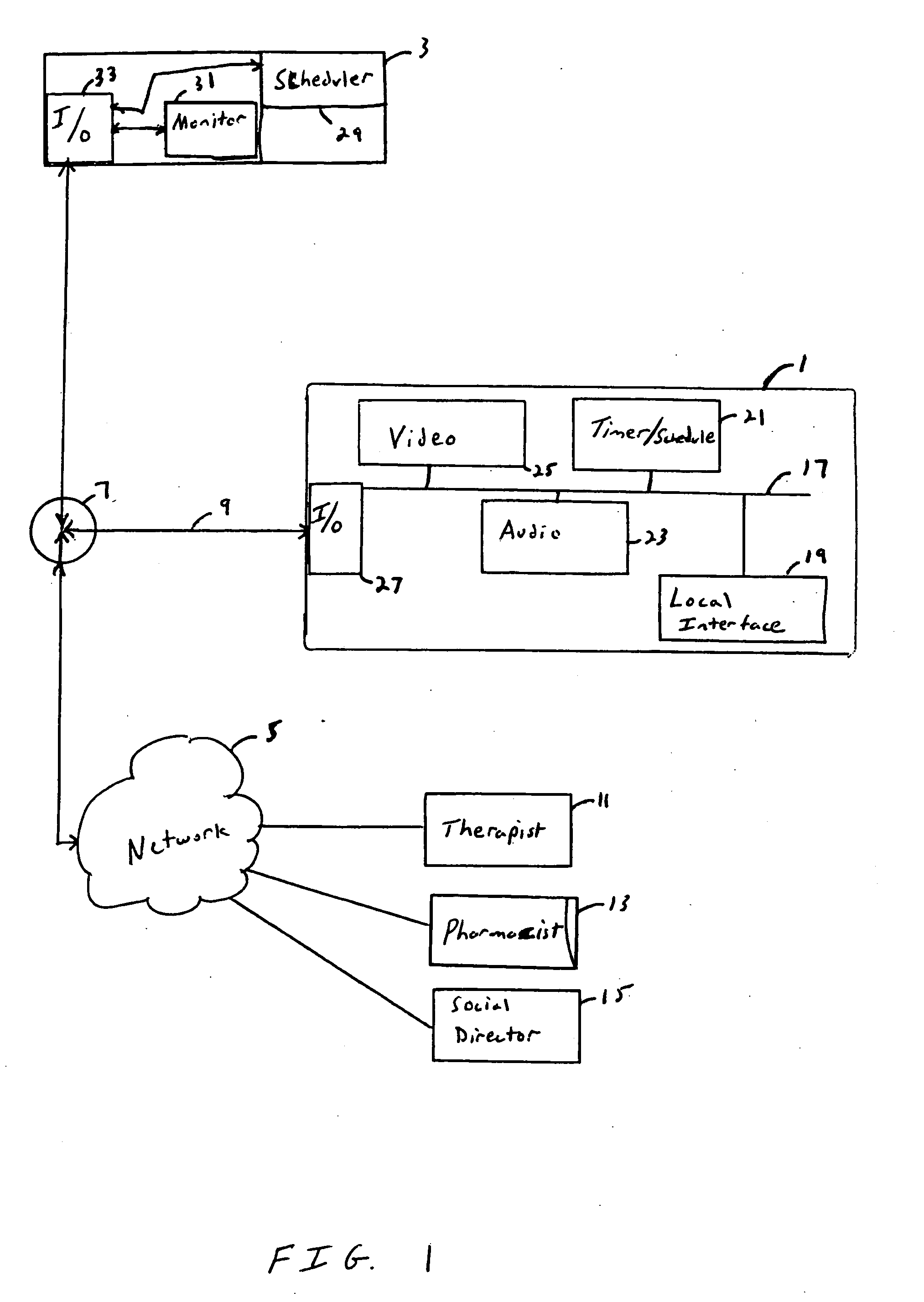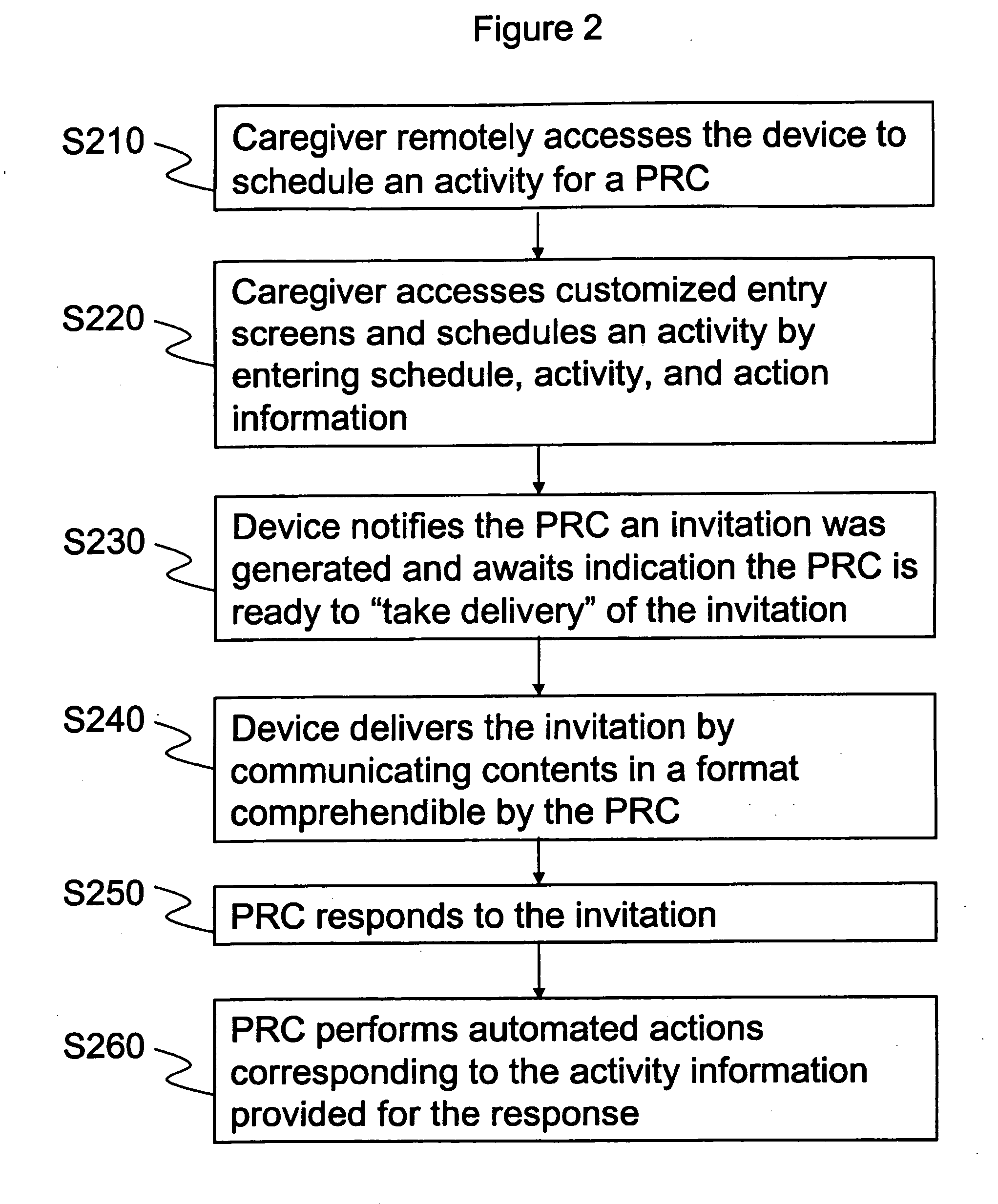Computer-automated system and method of assessing the orientation, awareness and responses of a person with reduced capacity
a computer-automated, interactive technology, applied in frequency-division multiplex, instruments, nuclear elements, etc., can solve the problems of increasing the cost of care for elderly people, serious emotional and financial stress, and increasing the burden on the elderly
- Summary
- Abstract
- Description
- Claims
- Application Information
AI Technical Summary
Benefits of technology
Problems solved by technology
Method used
Image
Examples
Embodiment Construction
[0030] Referring now to the drawings, wherein like reference numerals designate identical or corresponding parts or steps, FIG. 1 illustrates a system block diagram of a PRC scheduling and interface system according to the present invention. A local interaction device 1, commonly placed in the residence of the PRC, is connected by way of a communication link 9 by way of a router or switch 7 (optional) as part of a network 5 to a remote interface 3. Moreover, this connection between the local interaction device 1 and the remote interface 3 may be performed by any one of a number of ways, including direct physical connection (e.g. Ethernet, dialup network, Internet connection, wireless link, or hybrid combinations). The network 5 also connects to various third parties, such as equipment (like the remote interface 3) used by a therapist 11, a pharmacist 13, and social director 15, as will be discussed.
[0031] The local interaction device 1 is the device located near the PRC and is used...
PUM
 Login to View More
Login to View More Abstract
Description
Claims
Application Information
 Login to View More
Login to View More - R&D
- Intellectual Property
- Life Sciences
- Materials
- Tech Scout
- Unparalleled Data Quality
- Higher Quality Content
- 60% Fewer Hallucinations
Browse by: Latest US Patents, China's latest patents, Technical Efficacy Thesaurus, Application Domain, Technology Topic, Popular Technical Reports.
© 2025 PatSnap. All rights reserved.Legal|Privacy policy|Modern Slavery Act Transparency Statement|Sitemap|About US| Contact US: help@patsnap.com



